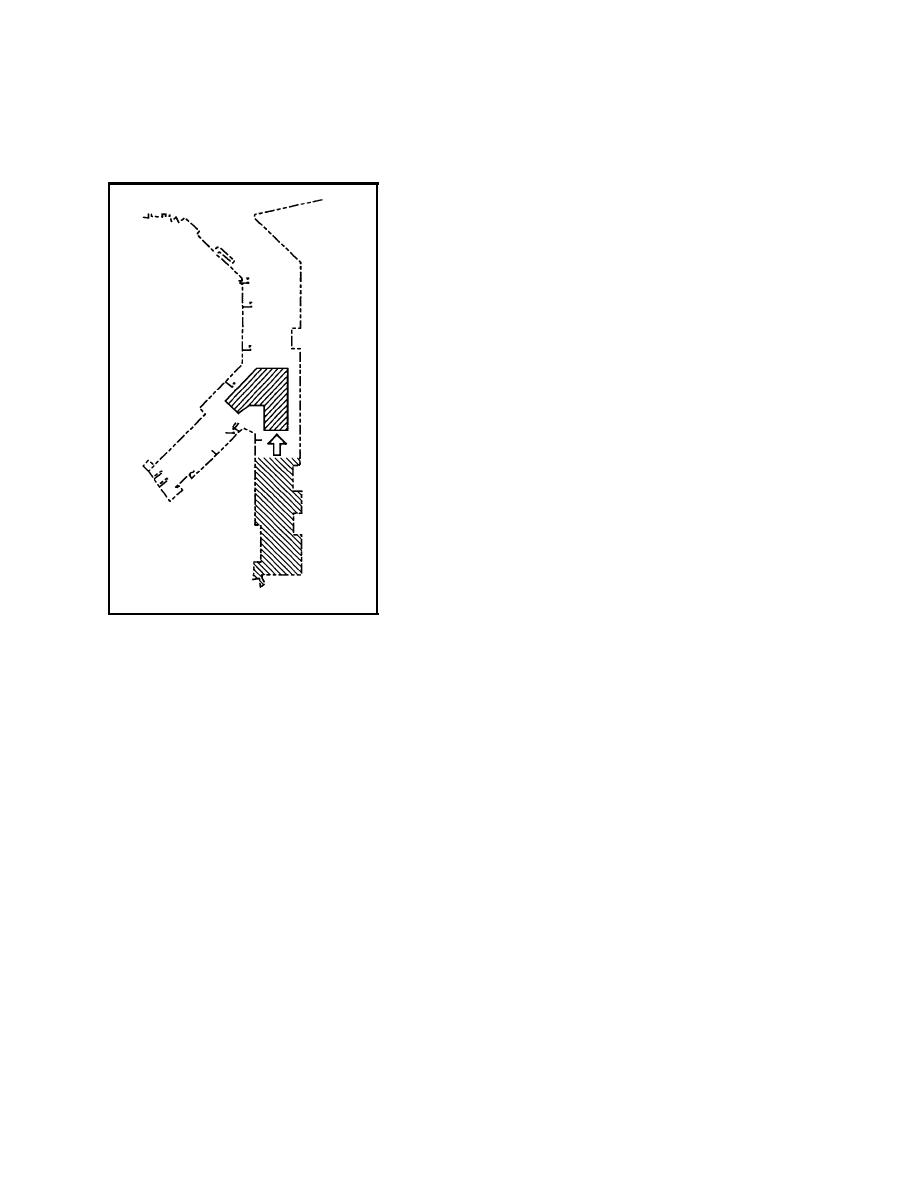 |
||
|
|
||
| |||||||||||||||
|
|
 pit was needed to compete the disposal of all expected contaminated mate-
rial. This procedure (Figure 37) was to be completed only once, and sub-
sequent maintenance would be completed using normal methods.
A suction dredge was converted to act as
the discharge vessel with the suction pipe
used as the discharge pipe. Conditions on
the suction dredge operation were (a) no
overflow, (b) no water jets in suction proc-
ess, (c) lower working speed, (d) must use
onboard pumping systems for contaminated
sediment discharge, (e) contaminated water
from silt and degassification must not be dis-
charged overboard, and (f) contaminated mix-
tures cannot be pumped overboard. The
discharge pipe was extendable to 30 m and
was equipped with a modified discharge
opening (diffuser). The diffuser directed the
discharge radially and reduced the exit veloc-
ity to between 0.3 and 0.4 m/sec. The
dredge was also equipped with a degassifica-
tion system. Contaminated material was
dredged with a modified stationary suction
dredge. Its suction mouth was equipped
such that only the upper layer of the dredged
material was touched, and the suction intake
had no moving parts or waterjets. The objec-
tive was to maintain the in situ density of the
dredged contaminated material throughout
the dredging, transporting, and discharging
Figure 37. Rotterdam Harbor CAD
operations. Pollution of the groundwater
project
through the bottom of the dredge pit was
also of concern. After researching this problem, it was decided to place a
layer of clay as a liner in the bottom of the dredge pit.
Hiroshima Bay
Hiroshima Bay in the Inland Sea of Japan was the site of bottom-
sediment improvement testing using a special barge unloader sand
spreader (Kikegawa 1983). The investigation demonstrated that the sand-
overlaying process was successful using a barge unloader sand spreader
(Figure 10), and the sand layer had only minor irregularities in thickness
with a mean thickness of 0.5 m. Coarse particle size (0.1 to 10 mm)
containing shells with silt content of 0.1 to 0.3 percent was used as the
overlaying material. The discharge sand quantity during the spreading op-
eration was estimated using the pump suction pressure. Bottom sediment
resuspension during discharge was measured with a portable turbidity in-
strument, which showed the resuspension of the bottom sediment was up
to 1.5 m above the seafloor. The depth of spreading did not cause any
noticeable differences in the spreading capability. The sand spreading
did result in turbulence in the bottom sediment, but contamination of the
124
Chapter 10 Case Studies
|
|
Privacy Statement - Press Release - Copyright Information. - Contact Us - Support Integrated Publishing |